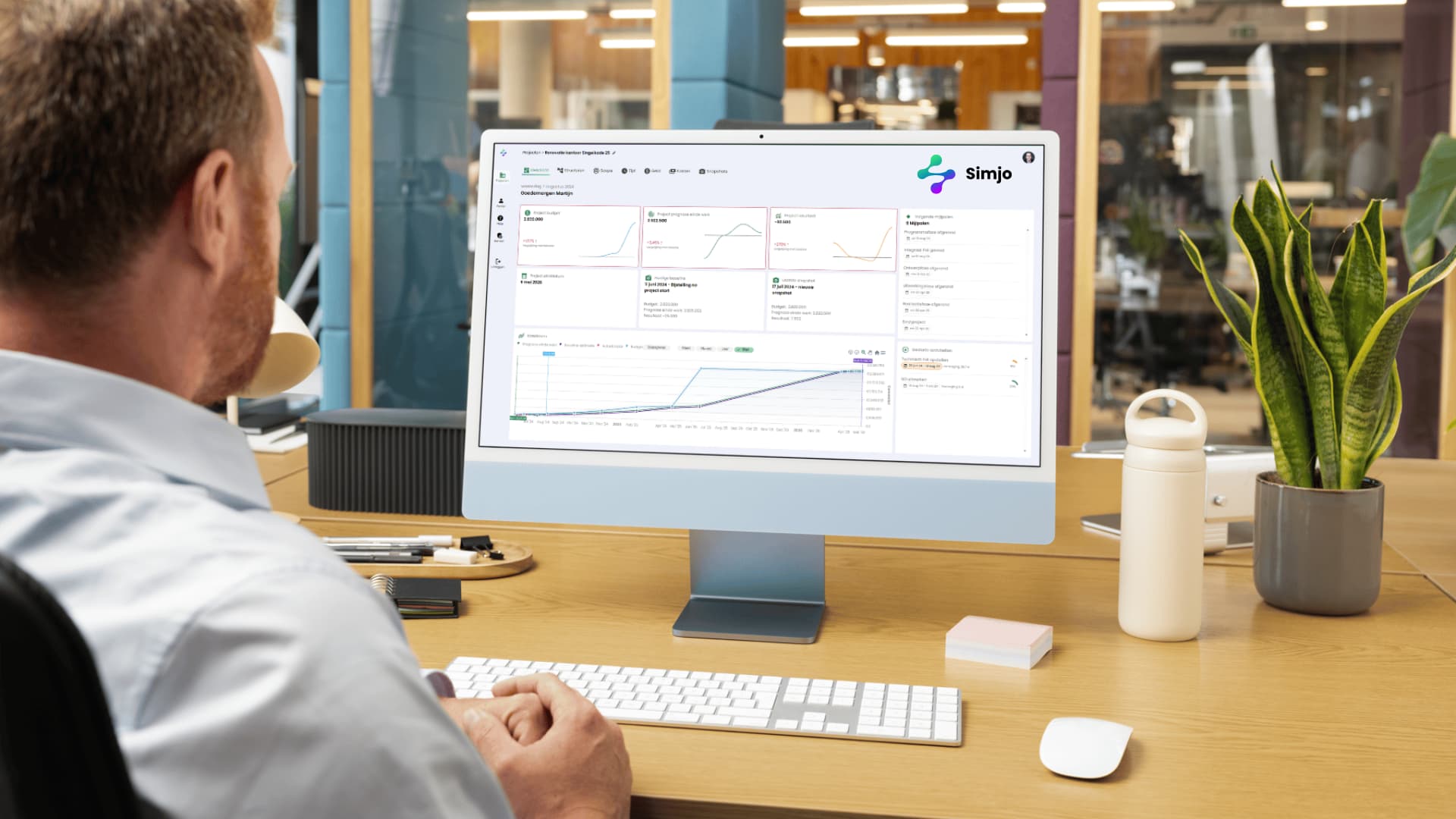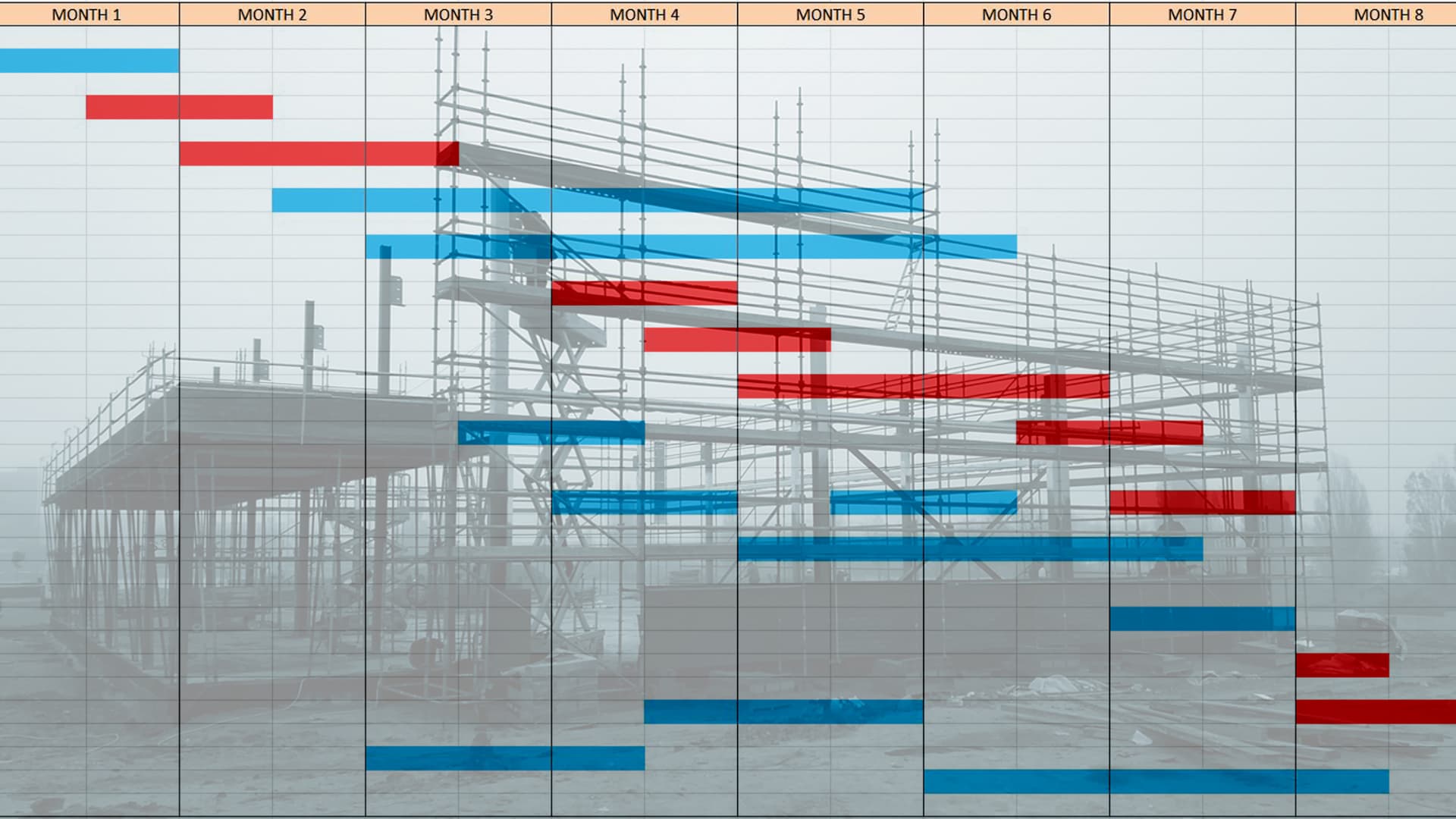Blogs
9 Ways Big Data is Optimizing Construction Project Management

The construction industry is rapidly transforming, with big data analytics playing a key role. Companies are unlocking the hidden value in their unused data to improve workflows, boost productivity, and make smarter decisions. This article explores how big data is reshaping the way the construction industry functions.
What Is Big Data in Construction?
The construction industry has always had large datasets available from digital and physical sources like BIM models, IoT sensors, blueprints, and project schedules. Unfortunately, a 2017 BDO Global report found that 95% of valuable construction megaproject data was discarded or unused.
This is where big data steps in. Instead of throwing away this valuable information, big data collects and analyzes it to generate actionable insights, helping construction project managers make smarter decisions and address long-standing challenges, such as inefficiencies, cost overruns, and resource wastage.
9 Key Benefits of Big Data in Construction
Below are the key benefits big data helps construction companies, with relevant examples of scenarios in which it can create a difference.
1. Smarter Planning with Data Insights
Big data transforms planning by analyzing historical and real-time project data. This allows teams to:
Identify risks early
For instance, if historical data shows that certain weather conditions delayed a similar project, project managers can plan accordingly by rescheduling tasks, using weather-resistant materials or planning more time for a specific task.
Optimize budgets and schedules
A construction firm working on a high-rise building can use big data to track previous material costs and workforce efficiency, adjusting the budget and timeline to avoid overruns.
Decide between buying or leasing resources
AI-driven analytics can recommend leasing heavy machinery for short-term projects such as bridge construction while suggesting purchases for frequently used equipment in long-term housing developments.
2. Advanced Design and Modeling Tools
Using big data, architects and engineers can enhance building information modeling (BIM) for:
Sustainable designs
Big data can analyze energy consumption trends to recommend designs that incorporate renewable energy sources, like solar panels in urban housing projects.
Predicting design flaws
A stadium design could be simulated to test structural stability under crowd weight, revealing and addressing potential weak points before construction begins.
Cost-efficient alternatives
Big data can compare various material suppliers, helping engineers choose between precast concrete or steel frames for warehouses based on cost and durability.
Also read: What is Building Information Management (BIM)?
3. Maximizing On-Site Productivity
Construction sites equipped with sensors, drones, and IoT devices generate valuable data. Analyzing this data enhances efficiency in many ways, such as:
Monitoring equipment
A road construction project might use IoT sensors to track bulldozer performance and schedule maintenance, ensuring minimal downtime.
Tracking workforce productivity
Wearable devices can monitor worker activity on skyscraper projects, identifying idle times and reallocating tasks to underutilized teams.
Automating workflow alerts
Drones surveying a residential project can alert teams to deviations, such as improper foundation alignment, reducing rework costs.
4. Strengthened Safety Measures and Risk Control
Construction remains one of the riskiest industries, with hazards such as falls and equipment malfunctions posing significant threats. Big data analytics enhances safety by:
Mapping high-risk zones
On large industrial sites, heat maps generated by big data can pinpoint accident-prone areas, prompting safety reinforcements like guardrails or warning systems.
Predictive maintenance
For example, data from previous crane usage in ports can forecast potential breakdowns, ensuring timely repairs and preventing accidents.
Proactive risk alerts
On high-speed rail projects, predictive analytics can warn against schedule risks caused by material delays or extreme weather conditions.
Risk management extends beyond safety to include project-level risks. Big data can identify cost overruns, delays, and other issues early, allowing project managers to intervene proactively.
5. Effective Budget Oversight
Budget overruns remain a common challenge in construction. Big data helps project managers stay on top of finances by:
Realtime expenditure tracking
For instance, a multi-city infrastructure project can monitor spending on raw materials to avoid exceeding allocated budgets.
Early identification of cost deviations
If labor costs spike unexpectedly, project managers can shift non-essential tasks to later phases.
Optimizing procurement strategies
Big data can highlight seasonal price drops for materials procured in bulk such as cement, allowing for strategic procurement for a construction project.
Also read: Tips to avoid budget overruns in construction projects
6. Seamless Team Collaboration
Big data platforms centralize information, enabling seamless sharing among stakeholders. This fosters:
Real-time updates
For example, a commercial tower project can use cloud-based dashboards to keep contractors and suppliers updated on delivery schedules and progress.
Collaborative problem-solving
Shared data allows engineers and contractors to devise quick solutions.
Strengthening client relationships
Regular progress reports generated from big data platforms can enhance trust and transparency with stakeholders.
Also read: Practical Tips on Assembling a Successful Construction Team
7. Anticipating Maintenance and Future Needs
Predictive analytics, powered by AI, alerts teams about maintenance needs before equipment fails, reducing downtime and preventing costly repairs. It also helps project managers forecast financial trends and resource needs, ensuring smoother project execution.
Forecasting maintenance needs
For instance, road construction companies can predict when asphalt layers will need repairs based on vehicle load data.
Preventing equipment downtime
Big data might flag unusual vibrations in tunnel boring machines, signaling maintenance before costly breakdowns occur.
Forecasting resource requirements
Analytics can estimate additional manpower or materials for expansions in ongoing housing projects.
8. Building with Sustainability in Focus
Sustainability is increasingly vital in construction. Big data aids in assessing environmental impacts, enabling construction firms to reduce their carbon footprint and build resilient structures that withstand extreme conditions.
Choosing eco-friendly materials
Analytics can compare lifecycle emissions of wood versus steel for residential projects, encouraging greener choices.
Reducing energy consumption
Smart sensors at construction sites can monitor and minimize electricity and fuel usage during large-scale factory builds.
Designing resilient structures
Data-driven analysis can propose hurricane-resistant designs for coastal infrastructure.
9. Enhancing Workflow Efficiency
Analyzing historical data helps identify inefficiencies in workflows. By leveraging these insights, construction firms can streamline processes, save time, and reduce costs across projects.
Streamlining processes
In modular construction, data can determine the most efficient assembly sequence, reducing time spent on reassembly.
Resource reallocation
If one site shows lower productivity, managers can move underutilized equipment or crews to maximize efficiency.
Automating routine tasks
Data-enabled systems can handle tasks like progress tracking and compliance checks, freeing teams to perform high-priority activities.
Also read: Why Excel is not an appropriate tool for construction project management
Would you like to discover how Simjo supports your construction project?
Simjo is project management software specifically developed for project managers and project teams in construction. Start for free and discover the possibilities of Simjo construction project management software!









